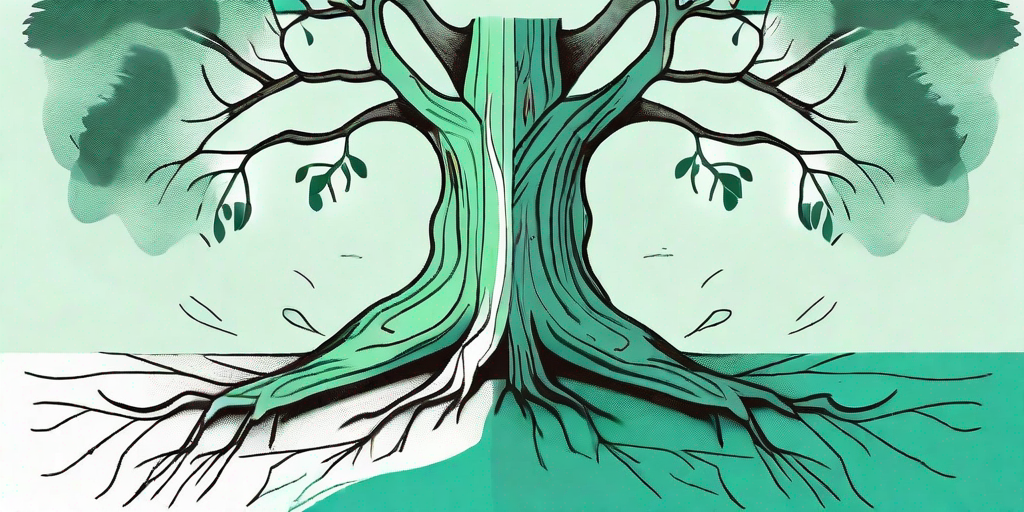
Trees are the silent, stoic sentinels of our gardens, parks, and forests. They've been around for millions of years, surviving everything from ice ages to asteroid impacts. But even these hardy organisms can fall victim to a scraped knee, or in their case, damaged bark. Fear not, dear reader, for we have the ultimate guide to healing your tree's 'boo-boos' and getting them back to their leafy best.
Understanding Tree Bark
Before we dive into the nitty-gritty of tree bark repair, let's take a moment to understand what we're dealing with. Tree bark is not just a rugged, textured coat that makes trees look cool. It's a vital protective layer that shields the tree from pests, diseases, and harsh weather conditions. It's like the tree's very own suit of armor, but without the shiny metal and chivalry.
Underneath this protective layer is the cambium, a layer of cells that are the lifeblood of the tree. When the bark is damaged, these cells are exposed and can be attacked by pests and diseases. It's like leaving your front door wide open with a sign that says 'Free Cookies Inside'. Not a good idea, right?
The Causes of Bark Damage
There are many culprits behind bark damage. It could be due to mechanical injury (like your lawnmower getting a bit too close for comfort), animals (like that pesky squirrel with a taste for bark), or environmental factors (like a harsh winter). It's a tough world out there for a tree.
But fear not, because with the right knowledge and tools, you can help your tree heal and thrive again. And that's where we come in.
Healing Damaged Bark
Now that we've covered the basics, let's get down to business. Healing damaged bark is not as daunting as it might seem. In fact, trees are pretty good at healing themselves. They're like the Wolverine of the plant world. But sometimes, they need a little help from us.
Here's a step-by-step guide to healing damaged bark:
- Assess the Damage: Before you start, take a good look at the damaged area. If less than 25% of the bark around the tree's circumference is damaged, the tree should recover on its own. If the damage is more extensive, it's time to roll up your sleeves and get to work.
- Clean the Wound: Using a sharp, clean knife, remove any loose bark from the damaged area. Be careful not to damage the cambium layer underneath. It's like performing surgery, but without the medical degree.
- Shape the Wound: Shape the wound into an elongated oval, with the long axis running vertically along the trunk. This helps the tree to compartmentalize the wound and promotes faster healing.
- Let it Heal: Once you've cleaned and shaped the wound, it's time to let nature take its course. The tree will form a callus tissue around the wound, which will eventually cover it completely. It's like watching a slow-motion superhero transformation.
Remember, patience is key. Healing takes time, so don't expect overnight results. In the meantime, you can enjoy the satisfaction of knowing you've done your bit to help a tree in need.
Preventing Bark Damage
As the old saying goes, prevention is better than cure. And it's no different when it comes to tree bark damage. By taking a few simple measures, you can protect your trees and keep them in tip-top condition.
Here are a few tips to prevent bark damage:
- Guard Against Mechanical Injury: Keep lawnmowers and other garden equipment away from your trees. If necessary, install a tree guard to protect the trunk.
- Protect from Animals: If animals are causing the damage, consider using a tree wrap or installing a fence around the tree.
- Prepare for Winter: In colder climates, winter can be tough on trees. Use a tree wrap to protect the bark from frost cracks and sunscald.
With these measures in place, your trees will be well-protected and ready to face whatever Mother Nature throws at them.
FAQs
Can a tree survive without bark?
Not really. Without bark, a tree is exposed to all sorts of threats, including pests, diseases, and harsh weather conditions. It's like trying to survive in the wild without clothes. Not a pleasant thought, is it?
How long does it take for a tree to heal?
It depends on the extent of the damage and the type of tree, but generally, trees heal slowly. It can take several months to a few years for a tree to fully heal. Patience is key.
Can I use a sealant on the wound?
While it might seem like a good idea, using a sealant can actually do more harm than good. It can trap moisture and create a breeding ground for disease. It's best to let the tree heal naturally.
So there you have it, folks. The ultimate guide to healing damaged bark. With this knowledge in your arsenal, you're ready to tackle any bark damage that comes your way. Now go forth and be the tree hero you were born to be!















